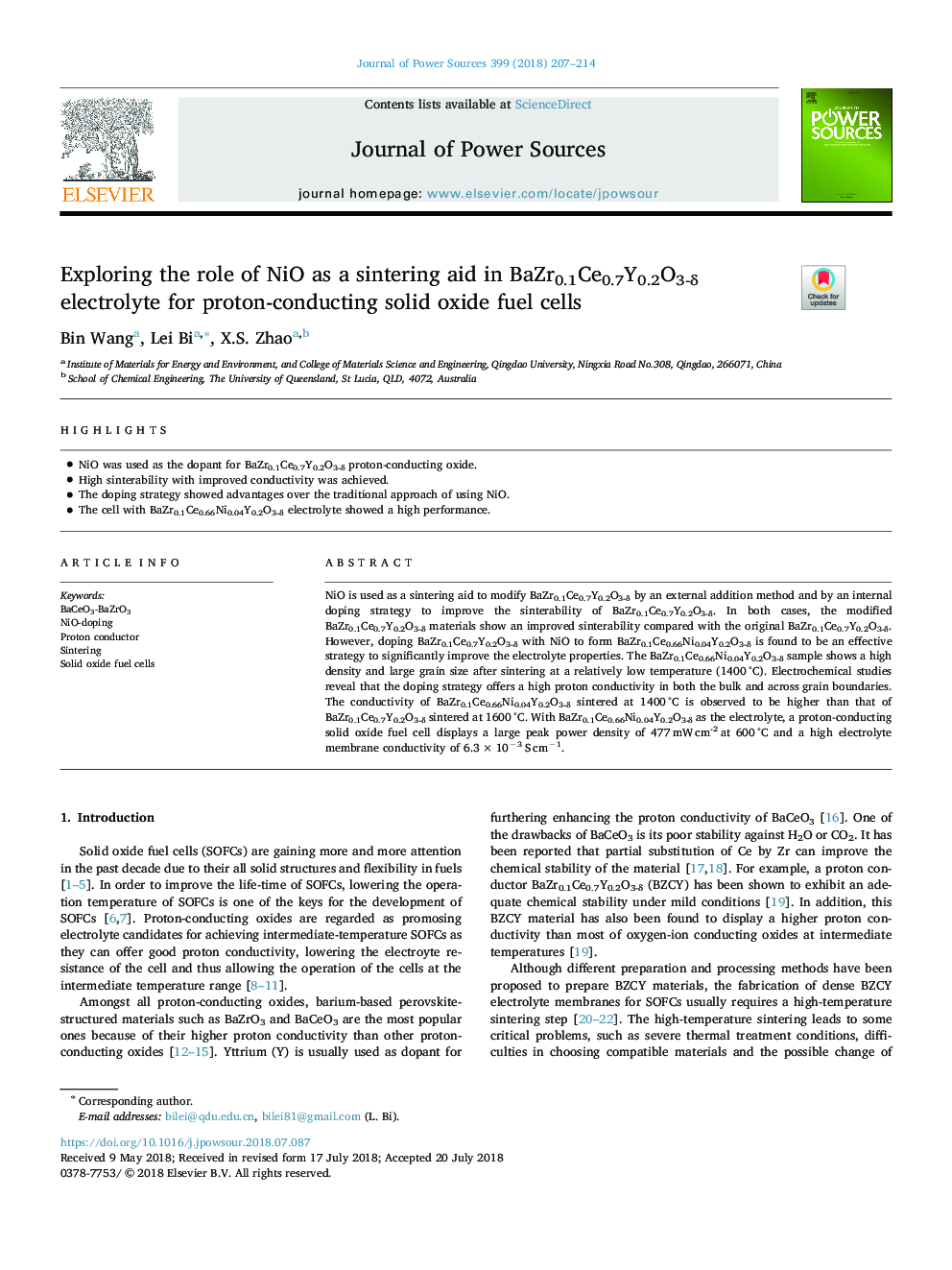| Article ID | Journal | Published Year | Pages | File Type |
|---|---|---|---|---|
| 7724752 | Journal of Power Sources | 2018 | 8 Pages |
Abstract
NiO is used as a sintering aid to modify BaZr0.1Ce0.7Y0.2O3-δ by an external addition method and by an internal doping strategy to improve the sinterability of BaZr0.1Ce0.7Y0.2O3-δ. In both cases, the modified BaZr0.1Ce0.7Y0.2O3-δ materials show an improved sinterability compared with the original BaZr0.1Ce0.7Y0.2O3-δ. However, doping BaZr0.1Ce0.7Y0.2O3-δ with NiO to form BaZr0.1Ce0.66Ni0.04Y0.2O3-δ is found to be an effective strategy to significantly improve the electrolyte properties. The BaZr0.1Ce0.66Ni0.04Y0.2O3-δ sample shows a high density and large grain size after sintering at a relatively low temperature (1400â¯Â°C). Electrochemical studies reveal that the doping strategy offers a high proton conductivity in both the bulk and across grain boundaries. The conductivity of BaZr0.1Ce0.66Ni0.04Y0.2O3-δ sintered at 1400â¯Â°C is observed to be higher than that of BaZr0.1Ce0.7Y0.2O3-δ sintered at 1600â¯Â°C. With BaZr0.1Ce0.66Ni0.04Y0.2O3-δ as the electrolyte, a proton-conducting solid oxide fuel cell displays a large peak power density of 477â¯mWâ¯cm-2â¯at 600â¯Â°C and a high electrolyte membrane conductivity of 6.3â¯Ãâ¯10â3â¯Sâ¯cmâ1.
Related Topics
Physical Sciences and Engineering
Chemistry
Electrochemistry
Authors
Bin Wang, Lei Bi, X.S. Zhao,
